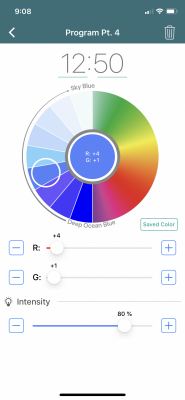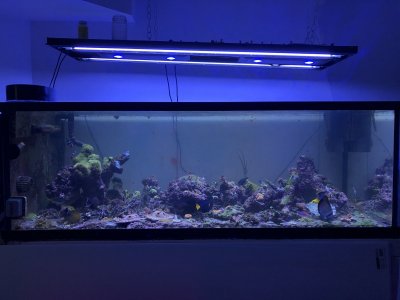I love the visual appeal of my Kessil AP700's, which I combo with 4x CoralPlus T5 bulbs on my mixed reef. However I struggle with blindly trusting "Kessil Logic," often expressed as 'just choose the shade of blue you like best, add in red and green to visual effect, dial in the sunrise/sunset, and presto.' So does changing the color wheel shift the PEAK wavelength of the light within the blue spectrum or does it shift the entire spectrum, or does it control how much "white"/red/green/violet light is added to an IDEAL spectrum in the ~400-500 nm range (ie the Deep Ocean Blue has nothing outside of 400-500 added and the Sky Blue has the most other ranges added).
The start of my peak intensity range:

The start of my peak intensity range:





















